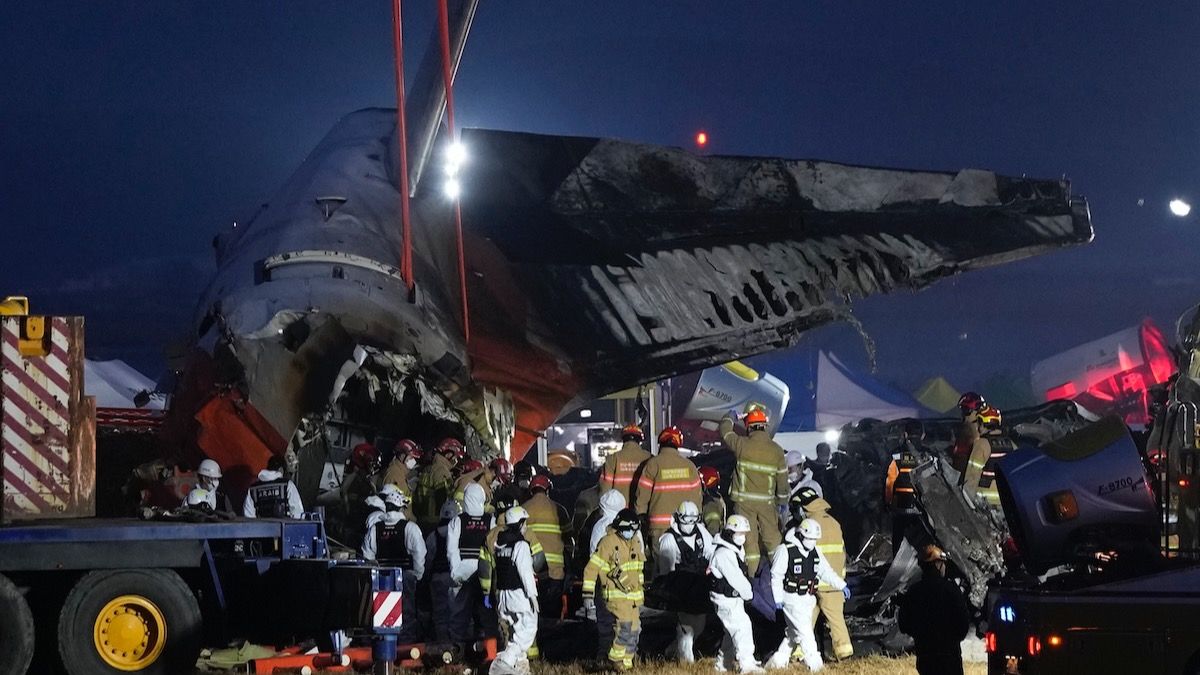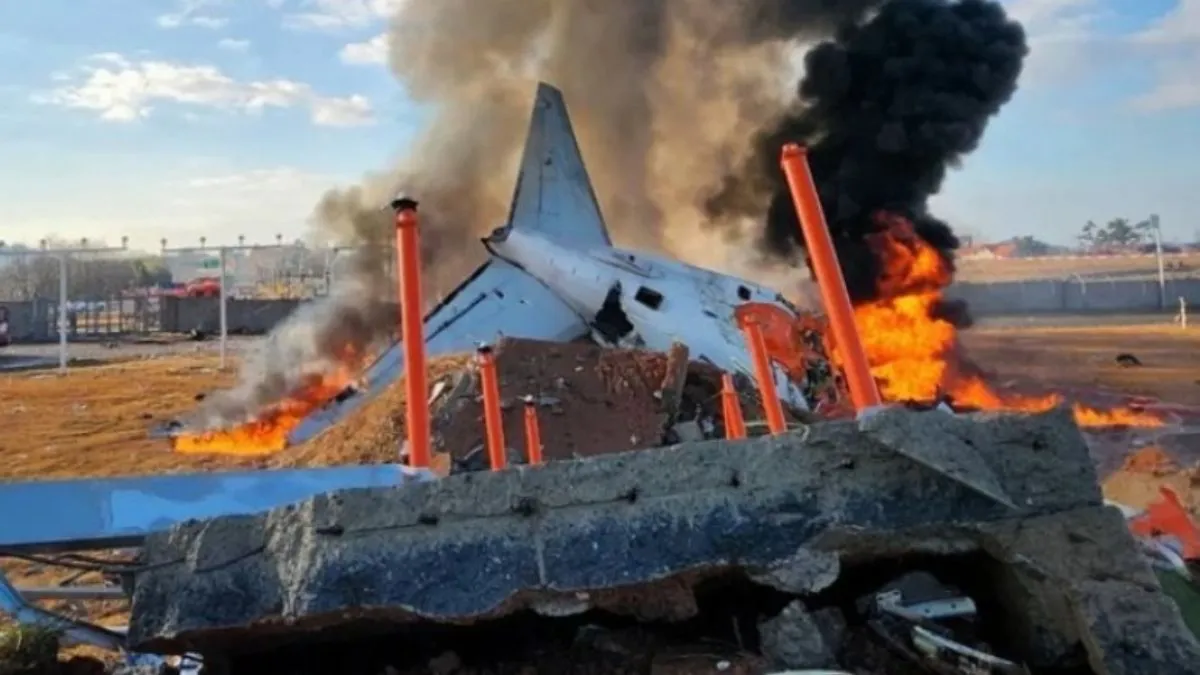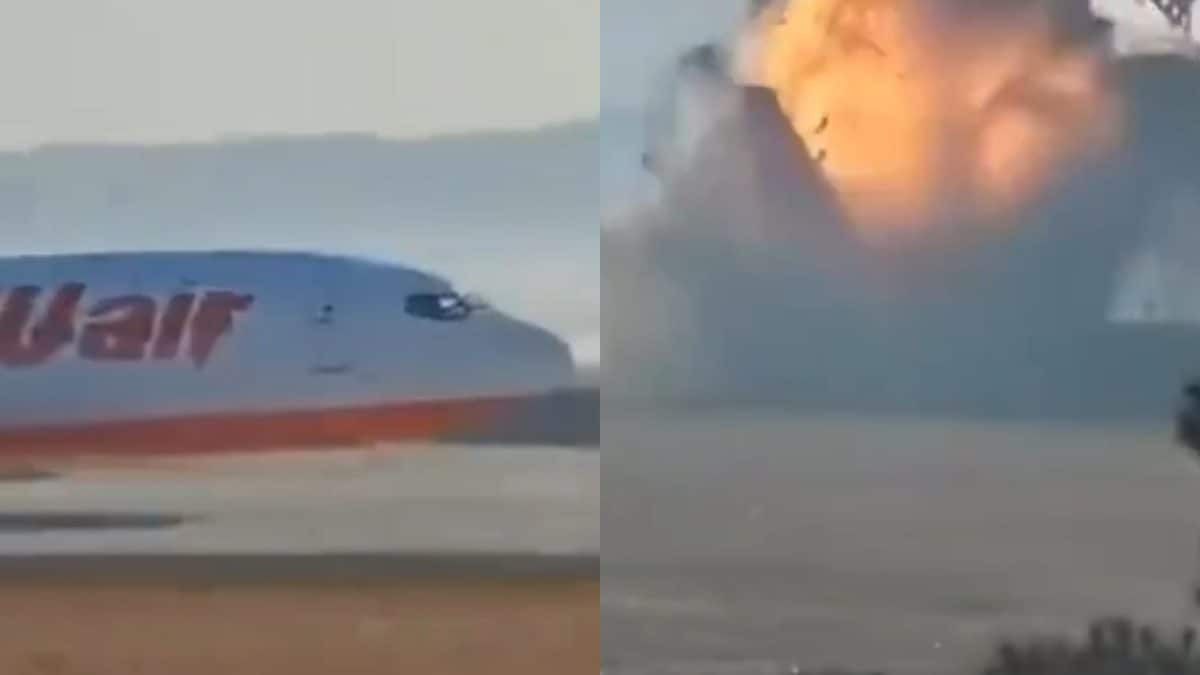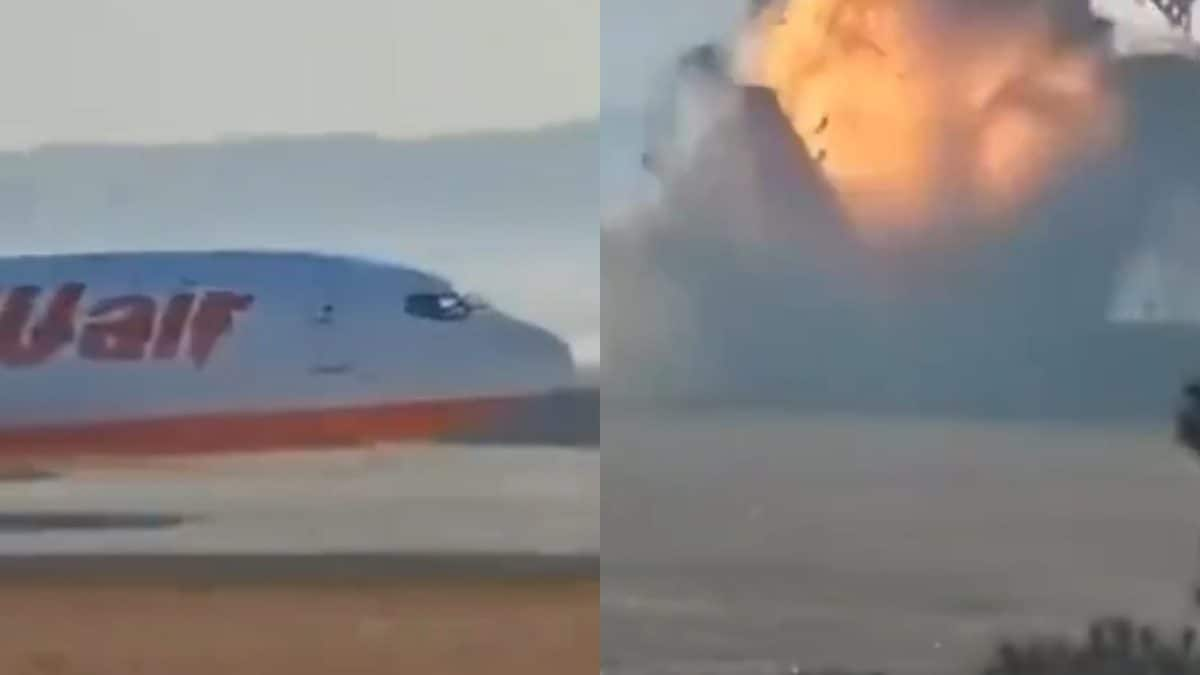South Korean plane crashes represent a significant chapter in aviation history, marked by both tragedy and advancements in safety. This exploration delves into the historical context, examining major incidents, their causes, and the subsequent impact on safety regulations and the nation. We’ll uncover the human stories behind these events, the technological responses, and the enduring legacy they’ve left on South Korea’s aviation industry and its people.
From examining timelines of past crashes to analyzing the socio-economic consequences, we aim to provide a thorough understanding of this complex issue. We’ll investigate the role of pilot error, mechanical failures, and weather conditions in contributing to these disasters, and discuss how South Korea’s aviation safety measures compare to international standards. The analysis will also highlight the long-term effects on the national economy, public perception, and the families affected.
A History of South Korean Plane Crashes
South Korea’s aviation history, like that of many nations, includes periods of significant advancements and tragic accidents. Understanding these crashes, their causes, and the resulting changes in safety regulations is crucial for ensuring the future safety of air travel. This article provides a chronological overview of significant South Korean plane crashes, analyzing their causes, impact, and the subsequent improvements in aviation safety.
Timeline of Significant South Korean Plane Crashes

Several major air accidents have impacted South Korea’s aviation history. The following table provides a summary of these events, highlighting the date, airline involved, location of the crash, and the number of casualties.
| Date | Airline | Location | Casualties |
|---|---|---|---|
| [Insert Date] | [Insert Airline] | [Insert Location] | [Insert Number of Casualties] |
| [Insert Date] | [Insert Airline] | [Insert Location] | [Insert Number of Casualties] |
| [Insert Date] | [Insert Airline] | [Insert Location] | [Insert Number of Casualties] |
Note: This table includes only a selection of significant crashes. A comprehensive list would be considerably longer.
Aircraft Types and Recurring Issues, South korean plane crash
Various aircraft types have been involved in South Korean plane crashes. Analyzing these reveals potential patterns. For example, [Insert example of aircraft type and recurring issue, e.g., a specific model of aircraft may have shown a recurring problem with its engine design in several accidents]. Further investigation into such patterns is crucial for proactive safety measures.
Aftermath of Three Significant Crashes
The immediate aftermath of major crashes typically involves a complex interplay of emergency response, investigation, and public reaction. Here are summaries of three significant incidents:
- [Insert Crash 1 Summary: Briefly describe the crash, initial investigation efforts, and public response. Include details about any immediate safety measures implemented in the aftermath.]
- [Insert Crash 2 Summary: Briefly describe the crash, initial investigation efforts, and public response. Include details about any immediate safety measures implemented in the aftermath.]
- [Insert Crash 3 Summary: Briefly describe the crash, initial investigation efforts, and public response. Include details about any immediate safety measures implemented in the aftermath.]
Causes and Contributing Factors

A multitude of factors can contribute to plane crashes. Understanding these is essential for developing effective safety protocols.
- Pilot Error: Pilot fatigue, inadequate training, or poor decision-making in challenging conditions have contributed to several crashes. [Insert specific example of a crash where pilot error was a significant factor.]
- Mechanical Failure: Malfunctioning aircraft components, inadequate maintenance, or design flaws have also been implicated in accidents. [Insert specific example of a crash where mechanical failure was a significant factor.]
- Weather Conditions: Adverse weather, such as severe storms or low visibility, can significantly increase the risk of accidents. [Insert specific example of a crash where weather was a significant factor.]
Compared to other countries with similar aviation industries, South Korea’s safety regulations and enforcement [Insert comparison of South Korean aviation safety regulations with those of other countries, highlighting similarities and differences. Discuss the effectiveness of enforcement mechanisms.]
Technological advancements, such as improved weather forecasting systems and flight data recorders, have played a vital role in enhancing aviation safety. [Provide specific examples of technological advancements and safety measures implemented in response to past crashes.]
Impact on Aviation Safety and Regulations
Major crashes have invariably led to significant changes in South Korea’s aviation safety protocols and regulations.
- [Insert example of a regulatory change following a crash and how it improved safety.]
- [Insert example of a safety protocol change following a crash and how it improved safety.]
International collaborations and agreements have also resulted from investigations into significant accidents. [Give examples of international collaborations or agreements resulting from investigations.]
Hypothetical Scenario: [Describe a hypothetical scenario illustrating how improved safety measures, such as enhanced pilot training or improved aircraft maintenance protocols, prevented a potential future crash. Focus on the specific measures and how they averted the accident.]
Okay, so we’re talking about that awful South Korean plane crash, right? The sheer scale of it is heartbreaking. It makes you think about the amazing feats of engineering, like the incredible light shows you can create with things like a chinese new year drone dragon , which, in contrast, represents such vibrant celebration. But then you’re brought right back to the gravity of the plane crash and the loss involved.
Socio-Economic Consequences
The impact of major plane crashes extends far beyond the immediate loss of life. These events have significant socio-economic consequences.
South Korean plane crashes are thankfully rare events, but when they happen, the impact is significant. For immediate updates and eyewitness accounts from the online community, check out the discussions happening on south korea plane crash reddit ; it’s a good place to find raw, real-time information. Remember to always verify information from multiple sources following a South Korean plane crash, though, as online discussions can be varied in accuracy.
- Economic Impact: Major crashes can severely impact the aviation industry, leading to decreased passenger confidence and financial losses for airlines. [Insert data or estimates on the economic impact of a specific crash.]
- Social and Psychological Effects: The emotional toll on families of victims and the broader public is immense. [Describe the long-term social and psychological effects of a specific crash on the community.]
- Societal Changes: Public perception of air travel and the demand for increased safety measures often change significantly after major accidents. [Describe long-term societal changes in response to major air disasters.]
- Memorials and Tributes: Memorials serve as places of remembrance and reflection. [Describe a specific memorial or public tribute dedicated to the victims of a significant crash, including its design and purpose. This could include details about the location, architectural style, and any symbolic elements.]
Case Study: The [Insert Airline Name] Flight [Insert Flight Number] Crash

The [Insert Airline Name] Flight [Insert Flight Number] crash, which occurred on [Insert Date], serves as a compelling case study. [Provide a detailed description of the crash, including the circumstances leading to the accident, pilot actions, weather conditions, and any mechanical failures.]
Okay, so we’re talking about that South Korean plane crash, right? The investigation’s probably looking at a lot of factors. Think about the complexities involved – it’s a bit like trying to understand the technology behind a ukrainian sea drone , only way more devastating. Understanding the drone’s capabilities helps us understand how such sophisticated technology might influence even seemingly unrelated incidents, like the plane crash, making the investigation that much more challenging.
The investigation process revealed [Insert details of the investigation process and findings, including contributing factors and recommendations for future prevention]. The lasting impact of this specific crash includes [Describe the lasting impact of this specific crash on the aviation industry and public perception.]
Ending Remarks: South Korean Plane Crash
Understanding South Korean plane crashes is not just about analyzing statistics; it’s about recognizing the human cost and the tireless efforts to improve aviation safety. Through examining past tragedies, we can appreciate the ongoing commitment to prevent future incidents. The lessons learned, both in terms of technological advancements and regulatory changes, serve as a testament to the resilience of the aviation industry and its dedication to passenger safety.
The stories of those lost, and the impact on their loved ones, serve as a poignant reminder of the importance of ongoing vigilance and improvement.
FAQ Compilation
What is the most common cause of plane crashes in South Korea historically?
While varied, pilot error and weather conditions have historically been significant contributing factors, alongside mechanical issues.
How has public perception of air travel changed in South Korea after major crashes?
Major crashes have understandably led to periods of decreased public confidence in air travel, prompting increased scrutiny of safety measures and airline practices. However, South Korea’s robust aviation industry has generally maintained public trust over time.
Are there specific memorials dedicated to victims of South Korean plane crashes?
Yes, several memorials exist, often located near crash sites or at significant airports. These memorials typically serve as places of remembrance and reflection for victims and their families.
What international organizations are involved in investigating South Korean plane crashes?
International bodies such as the International Civil Aviation Organization (ICAO) often collaborate with South Korean authorities during investigations to share best practices and ensure thoroughness.
